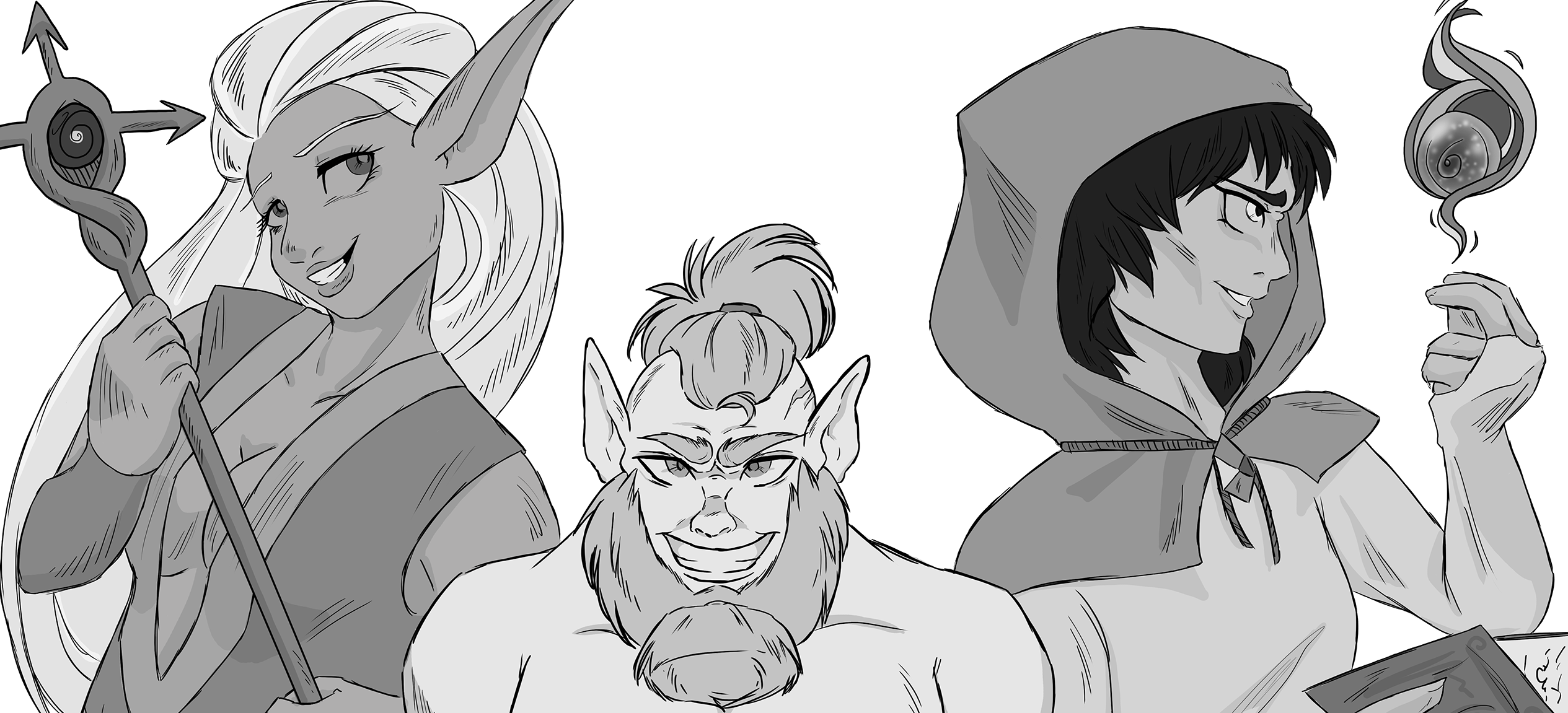This year marks the first physical prototype of Rise, the first game in the jokingly titled “Trash Isekai” legacy game trilogy, officially the Demon Lord Trilogy.
Preparation:
Technically two prototypes existed, because one was shown at a local game store to a single group of players for a sanity check before DDC. This one caught an issue with the Speed mechanic that made blocking hits more difficult than it needed to be. It was quickly corrected and a new version was printed that week, with the map on glossy 12×18 and the cards on normal paper slipped into sleeves with MTG cards as backing.
Protospiel:
The game got a total of 3 test runs, with entirely different groups and a variety of player counts. The game is intended to work with 4 players, but it was tested with 2, 4, and even 3 with a 4th joining near the end. The ruleset handling a drop-in player elegantly was a welcome surprise that I hadn’t explicitly designed for, but in retrospect makes sense when the established “death” condition for a player has them simply choose a new character and rejoin the party.
Test 1:
- 4 Players, one of which was myself, but without a rulebook of my own so the players could consult the book instead of me.
- Of the other 3, two were veteran tabletop gamers and one was extremely casual.
- Two pain points were discovered. If players spend too much time obsessing over the “best” move the game slows to a crawl, and if the combat mechanics don’t “click” the combat takes too long. These were both corrected by the next test.
- Multiple heroes got errata during this game due to fundamentally breaking the new combat system.
- The new player was the Fallen, but didn’t reveal it until after the game, so they technically lost. They were fine with it though.
Test 2:
- 4 players with me supervising. The players were instructed to solve problems via the rulebook and treat me as a live FAQ section to fill the missing one in the back of the book.
- All 4 players engaged fully with the themes and had a good time, and the game took less than half as long as the previous one.
- The previous pain point about time was resolved by removing one of the standard actions (encountering the current location), forcing the party to continue moving instead of camping a city or other location with favorable events.
- The pain point of combat taking too long was solved with a minor tweak to priority as well as a small change to combat math wording that made it simpler to wrap one’s head around (“Enemies hit on a number lower than 1+Strength” became “Enemies hit on their Strength or lower”, and “You hit on 8, reduced by your Strength” became “Die Roll + Strength, hitting on 8+”). With these changes, players could intuit which dice were valuable to them, as well as which dice were valuable to others.
Test 3:
- 2 Players, one of which was myself. This test took place at 3am of the final evening, as a “two idiots fumble through” game.
- The first combination of characters and starting events quickly led to a crushing defeat, necessitating a restart with new conditions and valuable data about unbalanced parties. No tank, no healer, and 2 characters with 0 Luck is ROUGH.
- The second playthrough went well, with the game playing out very differently compared to the full party. The game slowed back down as in Test 1, but this time it was only 2 players discussing it so the overall game duration didn’t suffer.
Lessons Learned
- The game shines when everyone is on board with the decisions being made, or dissent is resolved quickly. Each Demon Lord and party requires a different strategy, so differences in priorities are inevitable.
- The players reading hidden information such as a scout or Oracle need explicit instruction about what they can or cannot reveal.
- I need to order proper prints of the cards, the low-quality paper prints were hard to read. I am not a graphic designer, so my eye for these things is lacking.
What’s next?
I’ve already made the changes to the cards and game rules that proved to be a problem during the test, but more improvements can be made. An investor has expressed interest in funding the prototyping process, so getting quality tests at conventions every 3 months this year may be possible. If all goes well, I hope to have the game up for sale by early 2026.
